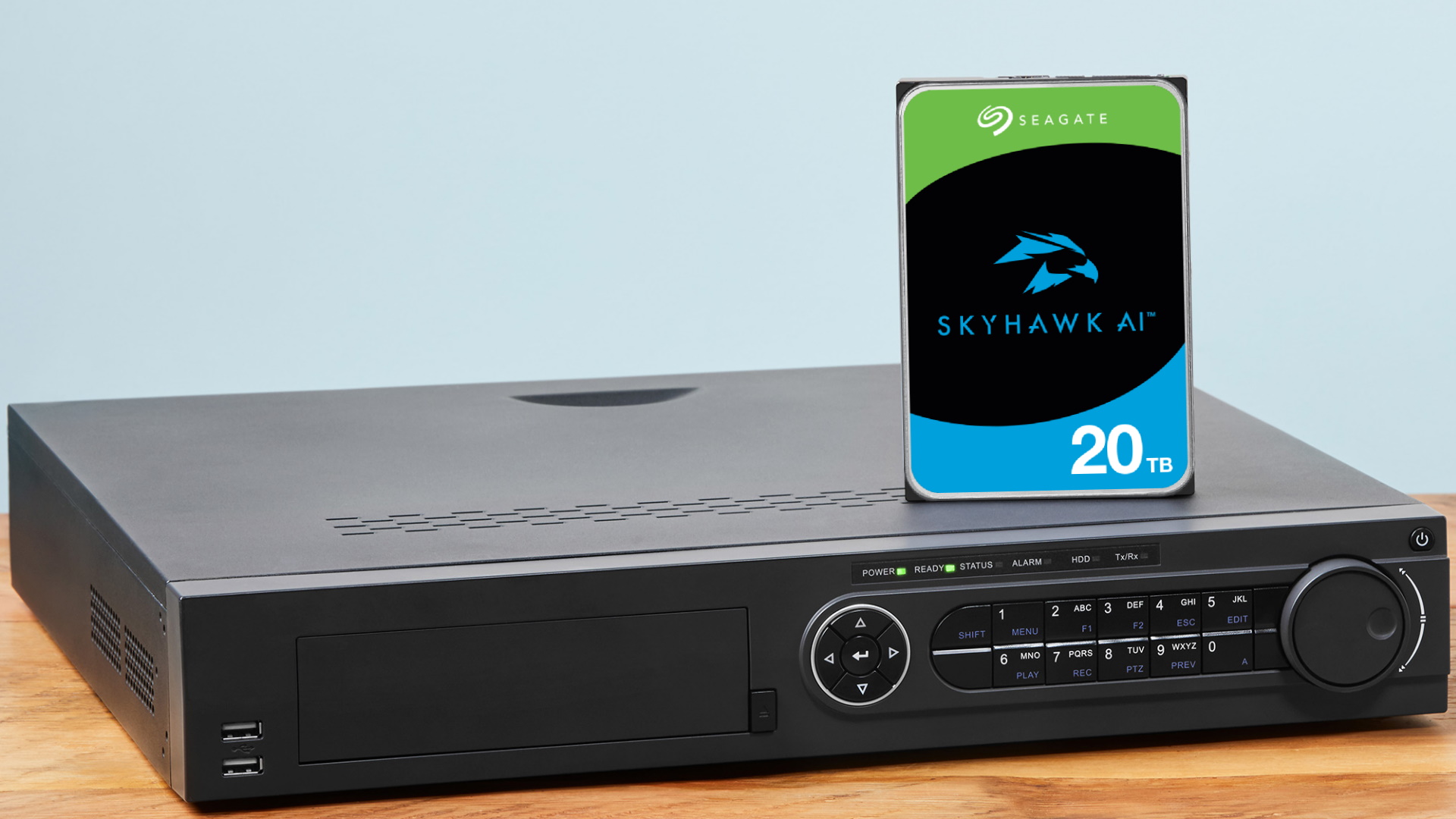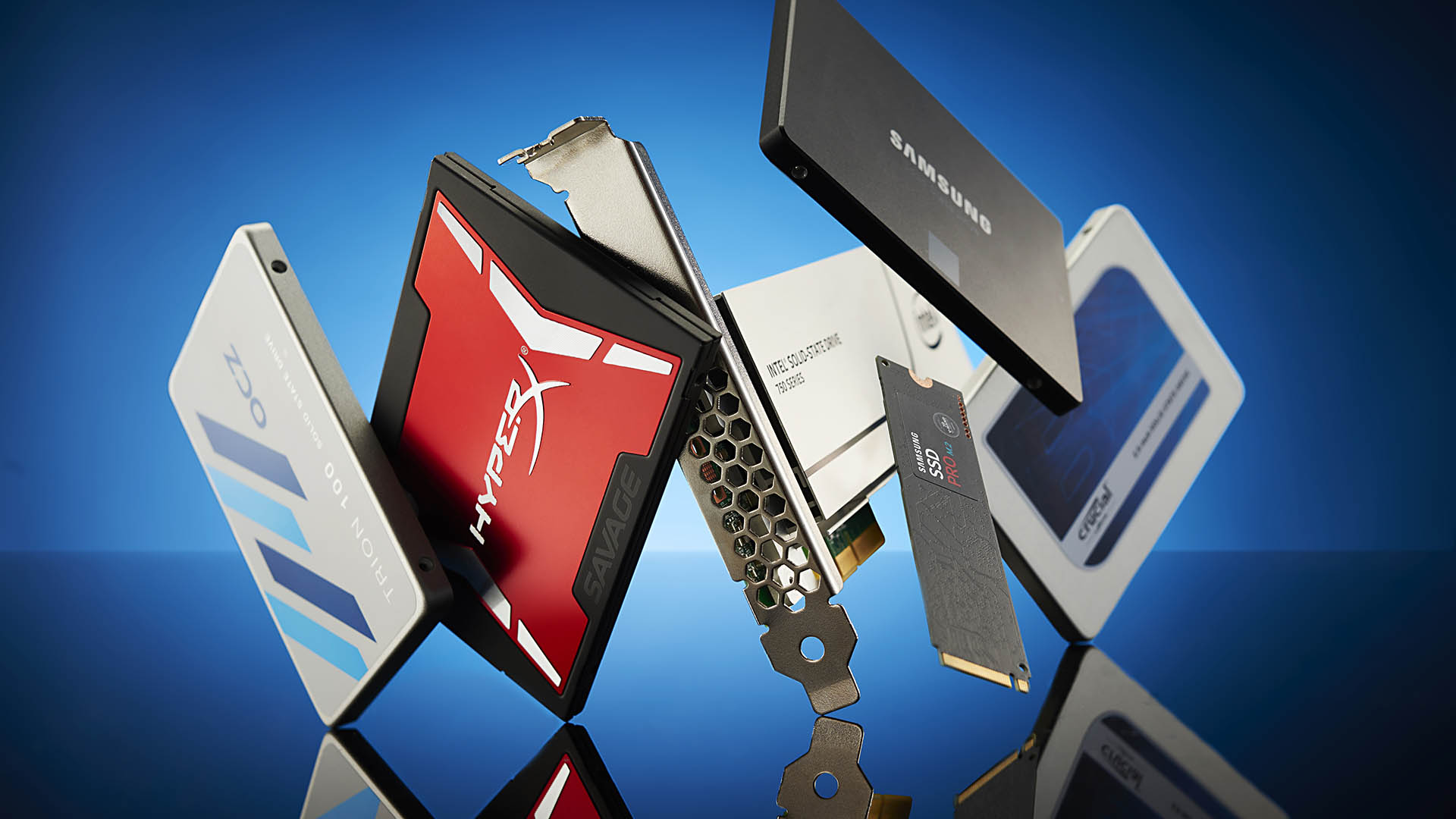Seagate's new hard drives show it's on track to deliver 50TB HDDs by 2026
Once again the humble hard drive refuses to go to the grave.

Seagate keeps pushing the limits of hard disk drives and has just released the SkyHawk AI HDD, which is now available at a whopping 20TB. This is a drive aimed at network video recorders with support for some AI cleverness no less, and isn't really aimed at the likes of you and me, but still, it's a good sign that Seagate is on track to fulfil its promise of 50TB hard drives by 2026.
Back in May last year Seagate launched its Mach.2 Exos 2X14, which weighed in at an impressive 14TB, and since then it has continued to release newer, denser drives. It now offers 20TB versions of the IronWolf Pro (NAS) and Exos X20 (Enterprise), with the newly announced SkyHawk AI being the latest model to get the 20TB treatment.
That Exos was a bit of a special case, in that it used the SAS 12GB/s interface to hit its impressive 524MB/s sustained transfer rate—an interface you won't find in normal gaming PCs. Seagate has released plenty of drives since though, that like this one, make do with the more consumer-friendly SATA 6GB/s interface. It isn't as fast as the Exos mind, topping out at a sustained transfer rate of 260MB/s.
The wonderfully named SkyHawk AI isn't a drive you'd actually want to jam inside your gaming rig mind, as you're paying over the odds for technologies you're not going to use. That said, $530 isn't as outlandish as I expected, and if anything represents a pretty good $0.03/GB, which will put even the cheapest SSD to shame.

Best SSD for gaming: the best solid state drives around
Best PCIe 4.0 SSD for gaming: the next gen has landed
The best NVMe SSD: this slivers of SSD goodness
Best external hard drives: expand your horizons
Best external SSDs: plug in upgrades for gaming laptops and consoles
The important point of all of this though is Seagate's original promise from last year, where it said we'd have 50TB hard drives by 2026. Not only that but hard drives with sustained throughputs that are competitive with SATA SSDs.
In order to get there, it stated that it needed to transition away from Perpendicular Magnetic Recording (PMR) or Conventional Magnetic Recording (CMR) and move over to Heat-assisted Magnetic Recording (HAMR) instead. The fact that it's hit 20TB using CMR here is a good sign that hard drives still have a few surprises up their sleeve.
Of course, SSDs are pushing things forward too, with speeds and capacities improving all the time. The imminent release of DirectStorage promises good things for speedy SSDs, with 1s load times, but there's always room for a seriously chunky hard drive in our hearts, and in our machines too.
The biggest gaming news, reviews and hardware deals
Keep up to date with the most important stories and the best deals, as picked by the PC Gamer team.
Alan has been writing about PC tech since before 3D graphics cards existed, and still vividly recalls having to fight with MS-DOS just to get games to load. He fondly remembers the killer combo of a Matrox Millenium and 3dfx Voodoo, and seeing Lara Croft in 3D for the first time. He's very glad hardware has advanced as much as it has though, and is particularly happy when putting the latest M.2 NVMe SSDs, AMD processors, and laptops through their paces. He has a long-lasting Magic: The Gathering obsession but limits this to MTG Arena these days.


